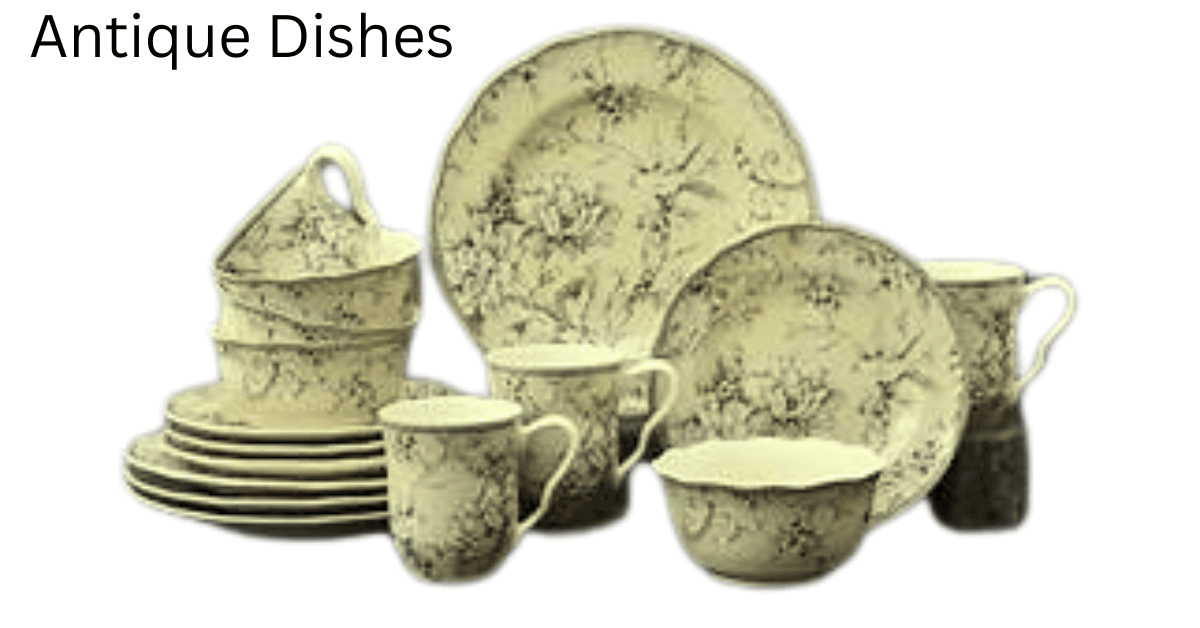The allure of antique dishes extends beyond their visual beauty. Their elaborate designs captivate collectors worldwide, whispering tales of ancient times. Identifying these dishes can seem daunting for those new to the realm of antiques. This guide will demystify the process and illuminate the art of antique dish identification.
History of Antique Dishes
Before diving into identification techniques, it’s crucial to understand the evolution of dishes. The rich history of dishware spans centuries, with each era bringing distinct designs and characteristics. For instance, the Renaissance saw ornate patterns, while more intricate and delicate motifs marked the Victorian era.
Basic Principles of Antique Dish Identification
Identifying antiques requires a discerning eye and knowledge of age indicators. A genuine 18th-century plate, for instance, will have different characteristics than a replica. Misconceptions abound, with many mistaking mere age for antiquity. It’s essential to differentiate between old items and genuine antiques.
Material Composition
Different materials hint at an item’s age and origin.
Porcelain
True antique porcelain will often have a soft, warm tone, unlike the stark white of many modern pieces. Differences in translucency can also provide clues about its age.
Ceramic
Antique ceramics, especially from Asia, have distinct types and glazes that vary across regions. The piece’s weight and feel might also reveal information about how old it is.
Glass
Early glass dishes, particularly from the Roman era, may have an iridescence caused by centuries of exposure to the elements. The presence of particular marks or patterns, like air bubbles, can also indicate age.
Bone China
Known for its strength and delicate appearance, genuine antique bone china often has a unique softness to its design and a distinct glow under light.
Design Patterns and Motifs
Patterns can reveal much about a dish’s age. For example, the blue and white prints are synonymous with 18th-century Chinese porcelain, while floral motifs were popular during the English Victorian era.
Manufacturer’s Marks
Marks, often found on the base of dishes, can unveil the item’s origin, manufacturer, and sometimes even its specific year of creation. However, one must be cautious, as forgeries are not uncommon.
Wear and Tear Indicators
Genuine antiques show wear patterns from actual use. This might manifest as slight fading of design in the centre of plates or wear around the rim of bowls. Beware of artificial distressing, which can be a sign of modern reproductions.
Authentication Techniques
Specific techniques can further aid in authentication.
UV Light Testing
When exposed to UV light, certain antique materials will fluoresce in a particular manner. This is especially helpful for identifying updates or recent repairs.
Sound Tests
A tap will make a distinct, ringing sound if the porcelain is unharmed. Damaged or restored pieces might produce a dull thud.
Touch and Texture
Authentic antiques often have an unmistakable ‘feel’ – a combination of weight, texture, and temperature.
Consulting Experts and Appraisers
When in doubt, seek out professionals. Trusted appraisers can provide insights and even valuation, helping determine if a dish is a hidden gem.
Online Resources and Communities
Websites, communities, and online forums can be beneficial resources. However, always cross-reference information to ensure its accuracy.
Caring for Antique Dishes
Antiques require special care. Avoid abrasive cleaners, and always store in a cool, dry place. While some dishes may be safe, always prioritize preservation over utility.
Summary
Identifying antique dishes is a journey of discovery, blending art, history, and detective work. With the knowledge and techniques outlined above, you’re well on your way to unveiling the stories hidden in antique dishware.
Frequently Asked Questions (FAQs)
What is the most valuable type of antique dish?
Value depends on rarity, condition, and demand. Historically, dishes from renowned manufacturers or rare patterns fetch higher prices.
How can I tell if a manufacturer’s mark has been forged?
Compare with verified marks from trusted sources. Discrepancies or modern-looking etchings may indicate forgery.
How do I decide if a dish is worth professional appraisal?
If the dish has unique features or marks or is associated with a significant period, it might be worth an expert’s evaluation.
Is it safe to use antique dishes for everyday purposes?
It depends on the dish’s material and condition. However, using them sparingly or for display to preserve their value and integrity is best.
